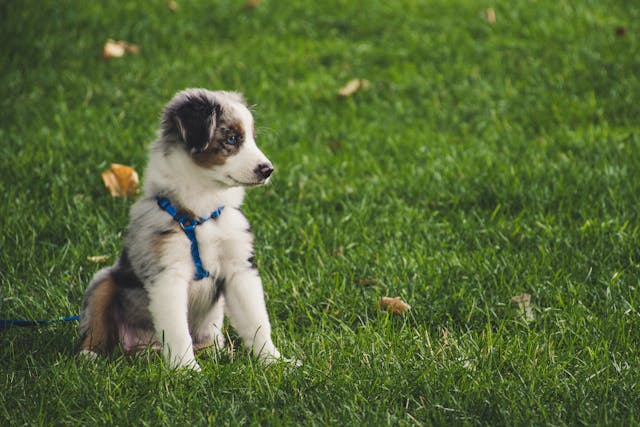Dog harnesses distribute pressure evenly across the chest, ensuring a secure and comfortable way to manage pets during walks. They reduce the risk of neck injuries, provide better control for handlers, and enhance safety, especially for energetic dogs. Available in various styles and materials, harnesses combine functionality with fashion, ensuring both comfort and flair for your pet.
Introduction to Dog Harnesses
Choosing the correct dog harness is not just about picking the first one on the shelf. It’s about ensuring your dog’s safety, comfort, and freedom of movement, making it an essential decision for any responsible pet owner. Unlike collars that can put too much pressure on your dog’s delicate neck area, a harness envelops the body, providing a near-universal fit that distributes pressure evenly across solid areas like the chest and shoulders. Walking, hiking, or even those enthusiastic sprints across the park are enjoyable and safe. The best harness for dogs adds a touch of style and essential functionality, proving a worthwhile consideration for your canine companion.
The variety of harnesses available can be overwhelming, but choosing the right one should suit your dog’s needs and lifestyle to ensure secure and enjoyable adventures.
Benefits of Using a Dog Harness
Harnesses offer dependable control over traditional collars, especially for energetic, large, or strong-willed dogs. They distribute pressure across the dog’s body, reducing the risk of neck injuries and tracheal collapse, especially in small and brachycephalic breeds. This ensures a comfortable experience for even the most unruly dogs. Harnesses also cater to dogs with anatomical or health concerns, such as post-surgery rehabilitation or older dogs with arthritis. By preventing choking and coughing associated with collar use, harnesses significantly improve walking experiences for the dog and the owner.
Understanding Different Types of Dog Harnesses
Dog harnesses are available in different types to provide optimal control and comfort. Front-clip harnesses are ideal for training as they discourage pulling by redirecting the dog’s momentum toward the handler. They reduce tug-of-war and increase the enjoyment of walks, but keeping a balanced approach is essential. Back-clip harnesses are simple and suitable for well-trained dogs, such as tiny dogs with leash tangling issues. They are easy to put on and provide a worry-free experience during strolls. Dual-clip harnesses offer versatility, providing front and back attachments and allowing handlers to switch between training and casual walking. These designs benefit owners who want to experience the best of both worlds. Resources like PetMD provide detailed explanations of harness benefits and selection tips.
Features to Look for in a Dog Harness
- Adjustability: Harnesses with adjustable straps cater to various body shapes, accommodating broad chests or narrow waists. They provide a snug but comfortable fit, preventing accidental escapes.
- Material: Opt for harnesses made from breathable materials, such as mesh or padded fabric, to avoid irritations or overheating, particularly during intense activities or warmer months.
- Reflective Elements: Incorporating reflective strips or stitching into the harness design ensures your dog’s visibility in low light conditions, providing peace of mind during dawn or dusk walks.
How Your Dog Should Be Measured for a Harness
- Begin with the girth measurement, capturing the circumference around the broadest part of your dog’s rib cage, usually just behind their front legs. This ensures the harness will close around the most critical size point.
- The neck measurement follows. Where the collar usually rests, wrap the tape around the base of your dog’s neck. Allow two fingers between the tape and your dog’s skin to avoid tightness.
- For growing puppies, selecting harnesses with adjustable accommodations is wise to avoid constant upgrades as they develop.
These measurements guide you toward a harness that fits well and ensures comfort and security without impeding movement.
Tips for Safe Harness Training
Your dog should enjoy a smooth and gradual transition to wearing a harness. Let your pet smell and get acquainted with the harness without wearing it. Gently place the harness on them and reward calm behavior with treats and affection. Short practice sessions will help dogs acclimate without stress. Be patient during initial walks and follow the positive reinforcement method, which emphasizes rewarding positive behavior while keeping training sessions short and enjoyable.
Common Mistakes to Avoid with Dog Harnesses
- Improper Fit: An ill-fitting harness can ruin the walking experience. Ensure regular checks, as the fit can change with your dog’s weight and hair growth.
- Overlooking Wear and Tear: Check often for wear indicators like weak buckles or frayed straps. These compromises can lead to potential accidents on the road.
A proactive approach to fit and maintenance ensures the harness serves its purpose efficiently, keeping your outings as safe as possible.
Conclusion: Making the Right Choice
When choosing a dog harness, ensure it’s safe and comfortable. Choose durable, adjustable designs and use positive reinforcement to enhance your experiences. This harness enhances your dog’s physical health and strengthens trust and joy, making every walk an adventure.




